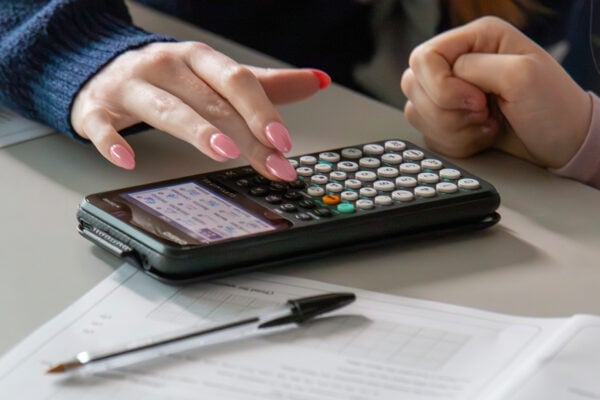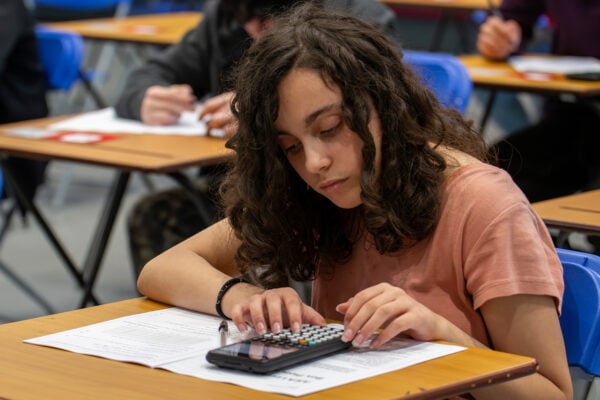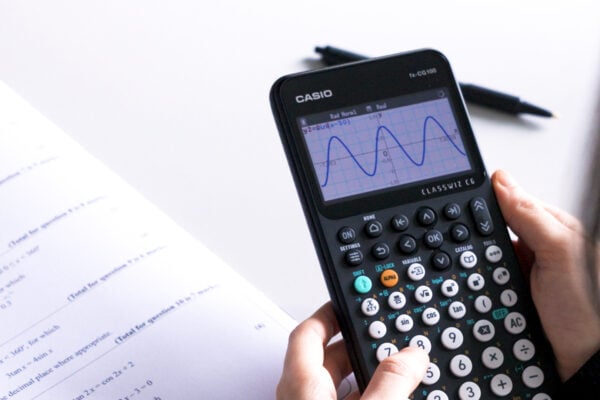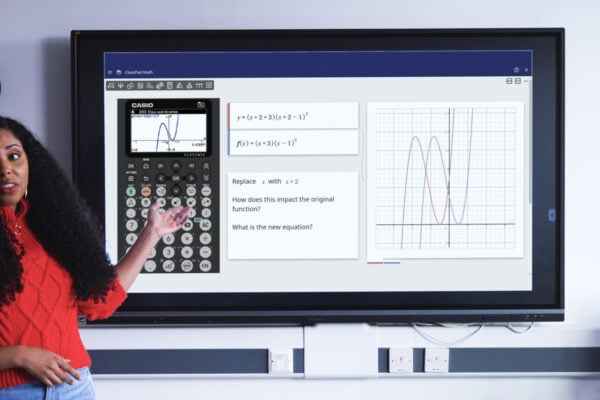Empowering students through mathematical thinking and tech

Mathematical thinking is a topic that’s coming up a lot in conversations within the education community at the moment.
To get an expert’s view on it, we spoke to Joely Fashokun, a former secondary school teacher who now lectures in maths at the University of Brighton School of Education.
She shared her thoughts on how mathematical thinking can manifest in the classroom, the part calculators can play and how it can be beneficial for teachers and students alike.
Mathematical thinking and creativity
On the subject of how we define mathematical thinking and what it means in practice, Joely said it often involves going further than just getting the right answer.
When students are encouraged to investigate why their answer is correct, as well as how they got there, they can start to think more deeply about maths. This helps to develop skills in areas like problem solving, identification of patterns and making connections between topics.
A question on finding the circumference of a circle, for example, will have a single answer that requires the application of a formula. But if they’re encouraged to zoom out and take a broader view, students will see that this question links to other concepts such as proportions, in terms of how the circle’s circumference relates to its diameter.
Another point that Joely was keen to stress is that mathematical thinking allows students to tap into something that is often overlooked: the creativity of maths.
She argued that, when approached in the right way, maths is one of the most creative subjects of all.
“That’s highlighted in the national curriculum and by the Department for Education,” Joely said. “I think that by teaching and encouraging mathematical thinking, you’re teaching children to be creative like the best mathematicians are.”
Calculators > answer generators
So, how can this approach to teaching and learning maths be combined with the use of calculators in the classroom and at home?
Joely made the point that the devices available to students today are highly sophisticated in what they can do. They’re much more than just answer generators, with all sorts of tools available to help users conduct their own investigations.
There are many examples of how the broad functionality of the latest calculators can help to encourage mathematical thinking.
Joely told us about a lesson she recently designed on highest common factors and lowest common multiples – a topic that could appear in either a calculator or non-calculator paper at GCSE.
The lesson asks students to work through the questions manually, but crucially, doesn’t include an answer sheet. Instead, students are given instructions on how to find the answers on their Casio calculator.
As well as deepening their understanding of the topic by working manually, they’re exploring a different method and improving their calculator fluency by checking their answers on the handset.
Using calculators to ‘go deeper’
Joely has also created a set of five teaching resources specifically for the ClassWiz scientific calculator range. Each one features ‘Going Deeper’ questions, which encourage students to take a more in-depth look at the topics and concepts they’re investigating.
The cross-number activity for the fx-83GT CW and fx-85GT CW, for example, features questions asking students to explore what happens when they remove the brackets from some of the calculations they’ve just completed.
This is something they can easily do independently on their calculators. What’s more, activities like this can help students better understand what’s actually happening in calculations and equations, by deconstructing and analysing them.
“With all technology – not just calculators – I think we need to be training students how to engage with it critically,” Joely said.
“Rather than relying on technology to do the thinking for them, they should be using it to ask probing questions and for really important tasks like checking that their answers are reasonable.”
The time-poor teacher’s perspective
Looking at mathematical thinking purely from a teacher’s point of view, there are fair questions to be asked about whether a more exploratory approach requires more time than direct instruction.
Joely made the point that encouraging students to conduct their own investigations, ask deeper questions and use their calculators efficiently could actually be the best thing a teacher can do for their workload.
“If your students are thinking independently and building resilience when they get stuck, that takes the pressure off you,” she noted.
“They’re taking more responsibility for their learning. In my experience, that means children who are more engaged in lessons, fewer calls home, fewer battles and a greater sense of achievement.”
If you’re interested in delving deeper into how scientific calculators can support and enable mathematical thinking, there are plenty of resources out there to help.
On our ClassWiz support page, you’ll find materials including:
- Joely’s five teaching resources, available to download in both PowerPoint and PDF formats
- How-to videos on tasks including creating a table of values and evaluating functions
- Interactive manuals for both the fx-83/85GT CW and fx-991CW



